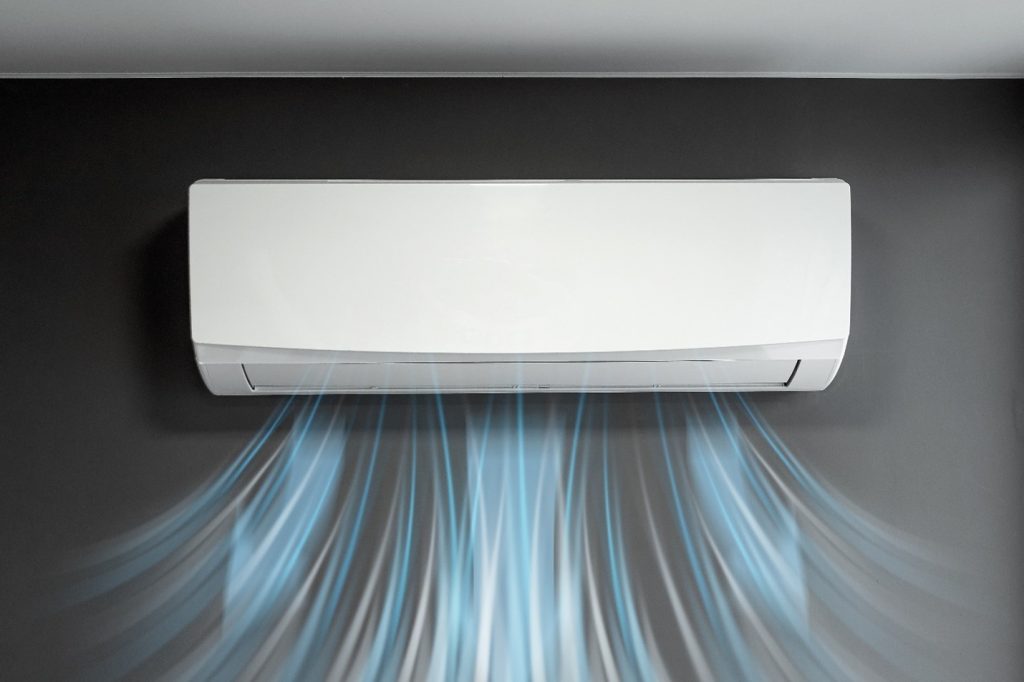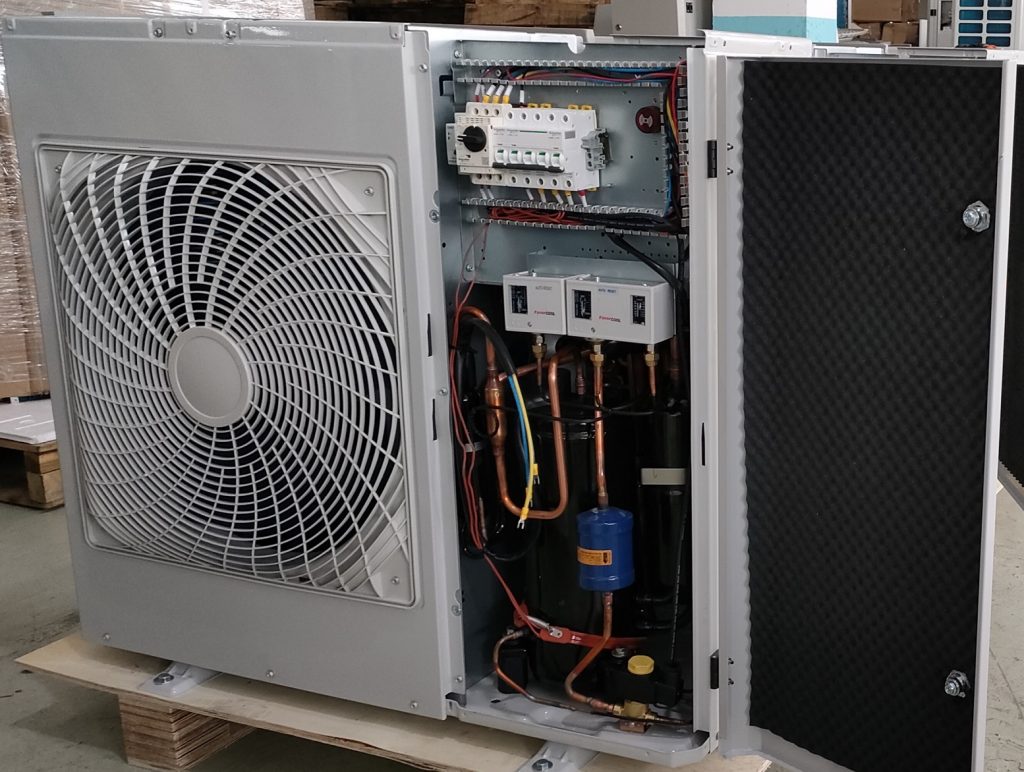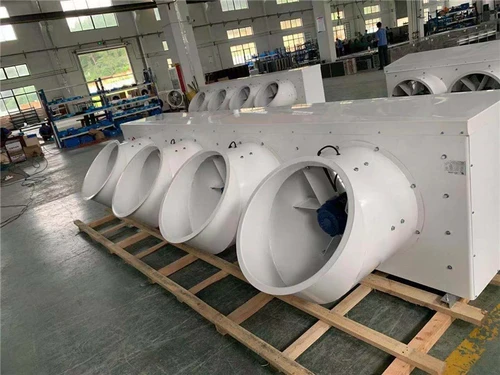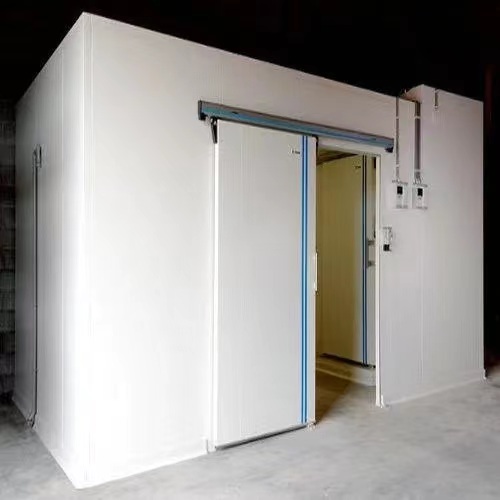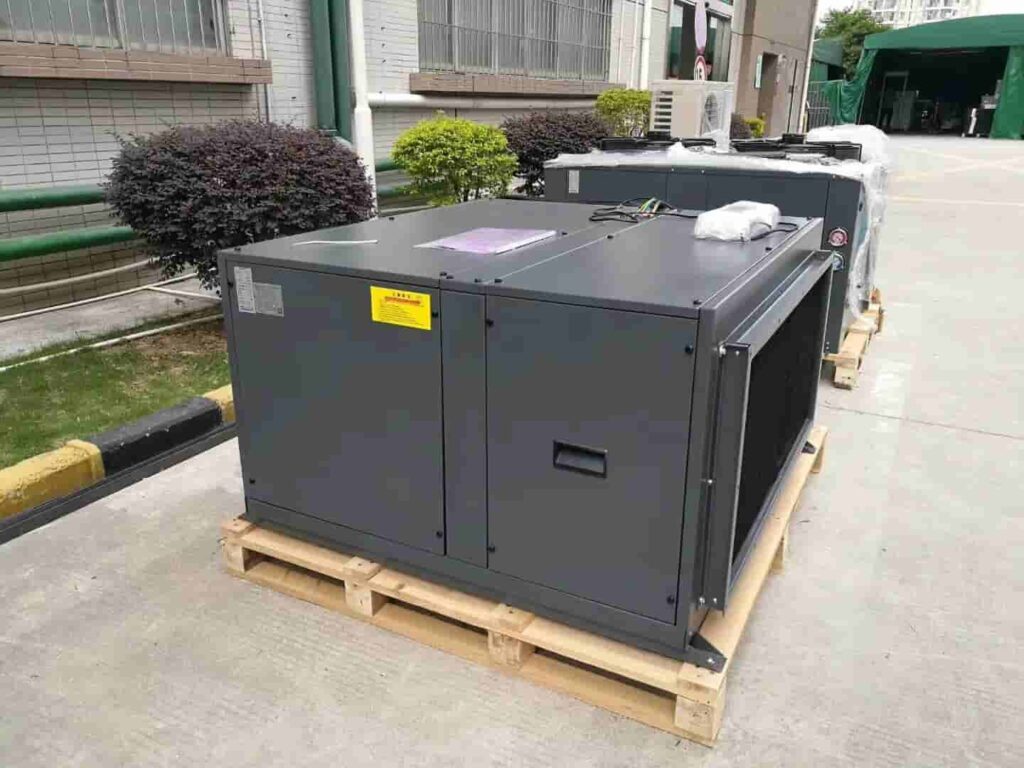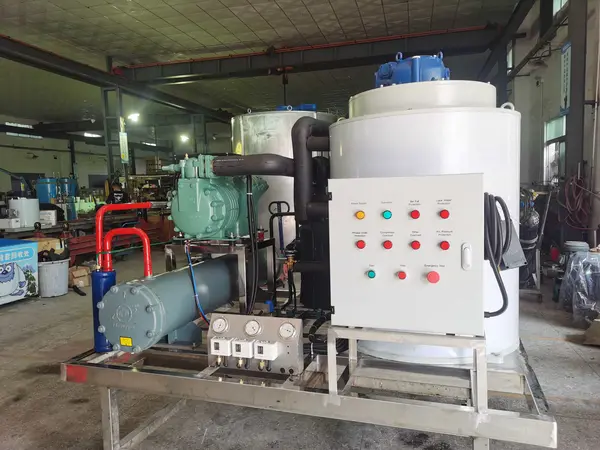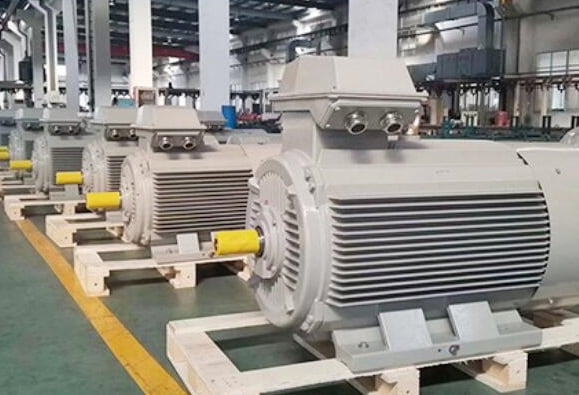Современные круизные лайнеры, навигающие по обширным океанам, как перемещение «Приморские города,И одним из основных компонентов, поддерживающих работу этой массивной сущности, является система холодной комнаты, скрытая под палубами.
Это не только спасательный круг для сохранения ежедневного запаса продовольствия тысяч пассажиров, но это также должно поддерживать точную функциональность на фоне встряхивания, соляная коррозия, и экстремальные погодные условия.
Круизный лайнер холодная комната Система плавно сочетает в себе науку и инженерию, молча выдерживать суровые вызовы моря, сделать это невидимым “низкотемпературная революция” в современных морских технологиях.
Уникальные особенности холодной комнаты круизного лайнера
Динамическая стабильность
Круизный лайнер Система холодной комнаты Должен поддерживать постоянную температуру в таких условиях, как качание корабля (до 15 °), коррозия соляного тумана (концентрация соли ≥3%), и экстремальные колебания температуры (Разница температуры более 60 ° C от тропических до полярных областей).
Долгосрочная самодостаточность
Для трансчевых путешествий, Еда должна храниться более чем, чем 30 дни. Например, Замороженное мясо должно храниться при -22 ° C, и охлажденные фрукты и овощи нуждаются при 0-4 ° C с 90% влажность, Установка высоких требований на стабильность оборудования.
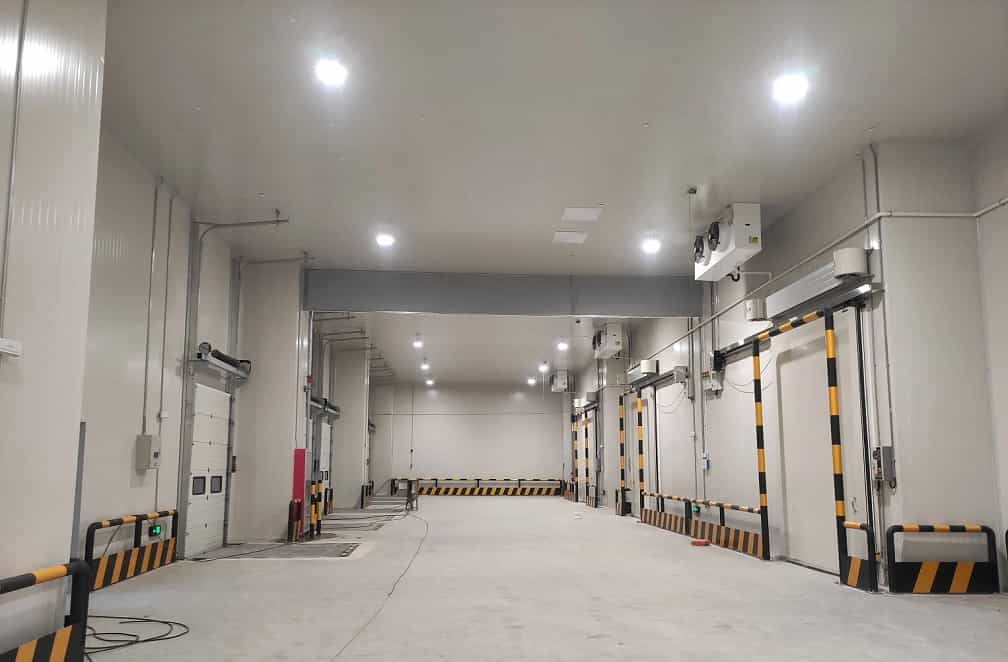
Зависимость от генераторов кораблей
Потребление энергии холодная комната Системная учета 10%-15% общего электроэнергии корабля. Он конкурирует за ресурсы с монетной системой и потребностями в кабине пассажиров. Если основной генератор не удается, резервная мощность может только поддерживать систему холодной комнаты для 4-6 часы.
Энергетическая технология приоритет
Используйте компрессоры инвертора (сохранять 50% энергия) и системы восстановления тепла (Повторно используйте тепло отходов для бытового отопления воды), сокращение ежедневного расхода топлива на 200-300 литры.
Точность прогноза инвентаризации
Алгоритмы ИИ анализируют такие факторы, как национальность пассажиров и сезонные маршруты (например, спрос на морепродукты есть 30% выше на маршрутах Аляски), достижение уровня ошибок закупок меньше, чем 5%.
Высококачественные возможности хранения продуктов питания
Круизные линии высшего уровня (например, Серебряные морские круизы) Ультра-низко-температурный хранение при -30 ° C для сохранения голубого тунца и постоянной влажности винные погреба при 12 ° C для хранения бордовых вин, который стал основной точкой продажи для привлечения клиентов с высокой сетью..
Проблемы дизайна и адаптивные решения для холодной комнаты круизных лайнеров
1. Оптимальное пространство и макет: Как максимизировать использование ограниченного корабля кабины?
Испытание: Круизный лайнер холодная комната Нужно хранить еду для тысяч пассажиров в компактном пространстве, Рядом с кухнями и портами снабжения палубы, чтобы сократить транспортные пути. Традиционная горизонтальная холодная комната занимает много места, конкуренция с другими функциями корабля (такие как пассажирские каюты и развлекательные услуги).
РЕШЕНИЕ:
Вертикальный слоистый дизайн: Используйте многослойную систему стеллажей (обычно 3-4 слои, с высотой 1.8-2.2 метров) Чтобы максимизировать вертикальное пространство в салоне.
Модульные блоки холодной комнаты: Сборные модули холодной комнаты (стандартный размер: 6M × 3M × 3M) можно гибко собрать, чтобы соответствовать различным типам кораблей. Карнавальный круиз Модульная холодная комната поддерживает изменения в зоне быстрого температуры (например, Преобразовать блок холодной комнаты на 4 ° C в замороженное хранение -18 ° C) реагировать на изменения в требованиях маршрута.
Интеллектуальное планирование потока: Cold Room Подключитесь к портам для загрузки/разгрузки на кухне и палуба через электрические конвейерные ремни (скорость: 0.5РС, нагрузка: 500кг за поездку), повысить эффективность транспорта 300% и уменьшить частоту дверных отверстий (сокращение потребления энергии 15%).
2. Коррозия и сейсмический дизайн: Противостоять суровой морской среде
Испытание: Среда с высоким содержанием солевого тумана вызывает быструю коррозию металлических компонентов, сокращать продолжительность жизни холодные помещения. Корабль раскачивается (с углом рулона до 15 ° и шага 5 °) может вызвать перемещение груза и разрывы труб.
РЕШЕНИЕ:
А) Коррозионные материалы
Панель холодной комнаты: 316L из нержавеющей стали (с 2.5% молибден) предложения 3 раз лучше устойчиво к коррозии солевого тумана по сравнению с 304 нержавеющая сталь.
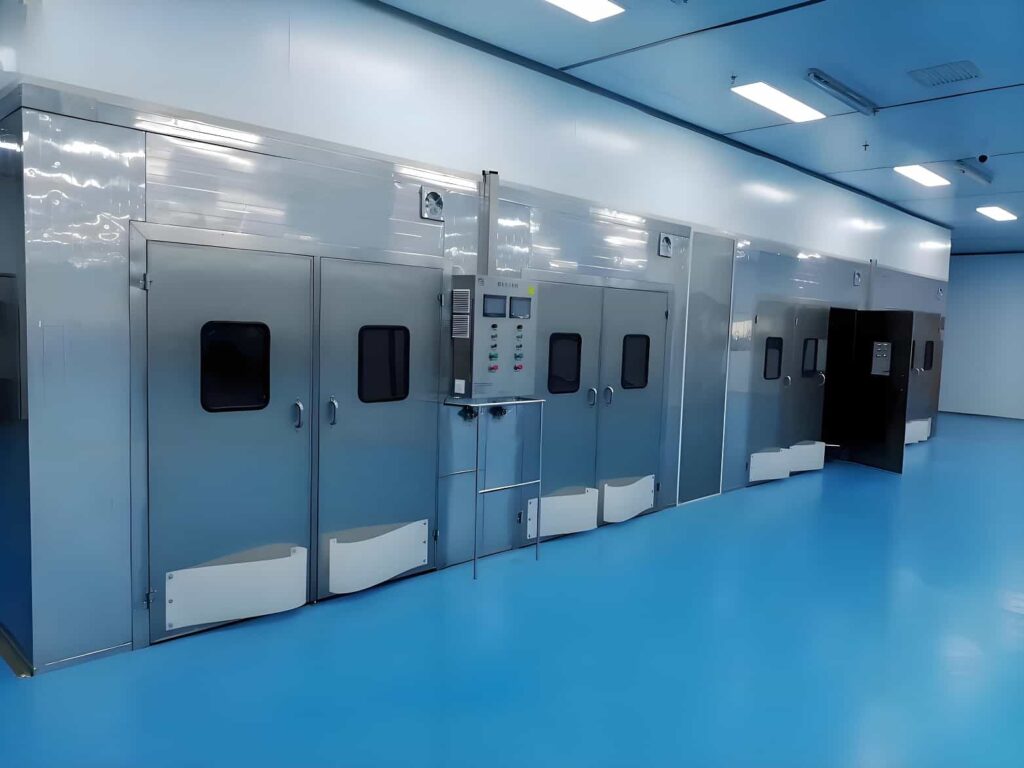
Внутренние полки: Горячая оцинкованная сталь (с толщиной слоя цинка ≥85 мкм), с превышающей выносливостью на выносливость 1,000 часы.
Запечатывающие материалы: Флуорусение дверь уплотнения (Диапазон температуры -40 ° C ~ 200 ° C), предложение 50% лучшая сопротивление старения, чем обычная резина.
Б) Технология антивибрации и анти-смещения
Гравитационные блокировки полки: Полки имеют электромагнитные замки (автоматически блокировка при сокращении питания), способен противостоять боковым ускорениям 0,3 г (эквивалентно инерционной силе корабля, раскачивающегося при 15 °).
Гибкие трубопроводные соединения: Медные хладагенные трубы Используют гофрированные конструкции труб (Расширение ± 15 мм) с упругими скобками (коэффициент демпфирования 0.7) Чтобы снизить риск утечки из -за вибраций судов.
Обработка против скольжения: Пол холодной комнаты покрыт полиуретановым анти-скольжением (Коэффициент трения ≥0,6) и встроенные с алюминиевыми сплавами (Расстояние 1,2 м) для обеспечения грузовых поддонов.
3. Эффективная технология изоляции и герметизации: Более борьба с потерей холодного воздуха и увеличение потребления энергии
Испытание: Разница температур между внутри и снаружи холодная комната Блок на круизном лайнере может достигать 50 ° C (например, Внешняя температура 35 ° C в тропическом море, с внутренней температурой при -15 ° C), сделать традиционные изоляционные материалы недостаточными для энергетических потребностей. Частые дверные операции приводят к потере холодного воздуха, Дальнейшее увеличение потребления энергии.
РЕШЕНИЕ:
Вакуумная изоляционная панели (VIP): Состоит из материала ядра из стекловолокна и алюминиевых пленок барьеров, с толщиной всего 50 мм и теплопроводностью ≤0,005 Вт/(М • К.), предложение 4 Времена эффективность изоляции традиционной полиуретановой пены: 0.02W/(М • К.).
А) Системы воздушных дверей
Кратко закрытые двери воздушного шлюза: Пневматически управляется (Время закрытия: 0.5 секунды), с нагретыми полосками вокруг зазоров двери (Поддерживать 40 ° C.) Чтобы предотвратить обледенение. Холодная потеря воздуха на открытие двери уменьшается на 70%.
Двойные переходные камеры: Переходная камера (1.5м глубоко) в холодная комната вход, с попеременно.
Интеллектуальный монитор печати: Датчики давления (Точность ± 0,1pa) На дверных зазорах обнаружен статус герметизации в режиме реального времени. Если обнаружено аномальное давление (например, сбой печать), вызовет тревогу, и активировать резервную магнитную защелку дверей (с силой удержания ≥500N).
4. Адаптация к экстремальным средам: Охлаждения от тропических до полярных регионов
Испытание: Тропические моря имеют высокие температуры и влажность (например, Карибская летняя температура 45 ° C, 90% влажность), вызывая система охлаждения холодильной камеры испытать тяжелые нагрузки.
В полярных маршрутах, низкие температуры (-30°С) вызвать внешний слой холодной комнаты до льда, влияет на эффективность изоляции.
РЕШЕНИЕ:
А) Усиление охлаждения для тропических средств
Двухэтапная система Compression Coldrigtion: Высокотемпературный компрессор (Полицейский 4.2) Предварительно охлаждение воздуха, и низкотемпературный компрессор (Полицейский 2.8) Далее снижает температуру, повышение общей эффективности системы 30%.
Конденсатор с морской водой: Использует морскую воду (Температура ≤32 ° C.) из -под корабля, чтобы охладить хладагент, предложение 40% больше энергоэффективности, чем конденсаторы с воздушным охлаждением.
Б) Антилюционные меры для полярных регионов
Электрические нагревательные пленки: Нагревающие пленки из углеродного волокна (власть: 200W/м²) встроенный во внешнюю стену холодная комната Поддерживать температуру выше 0 ° C, предотвратить замораживание конденсации.
Дополнительный изоляционный слой: Добавить одеяло аэрогеля толщиной 50 мм, теплопроводность 0,018 Вт/(М • К.), к внешнему слою холодной комнаты на полярных маршрутах, улучшить общее термическое сопротивление 25%.
Трубопровод для холодной комнаты круизны
я. Конструкция трубопроводов
1. График хладагента
А) Выбор материала
Основной трубопровод хладагента: Бесплатные медные трубы (ASTM B280 Стандарт), Толщина стенки ≥1,5 мм, Резистентность к давлению ≥4,2 МПа, Подходит для хладагентов, таких как аммиак (Н.Х.) и co₂.
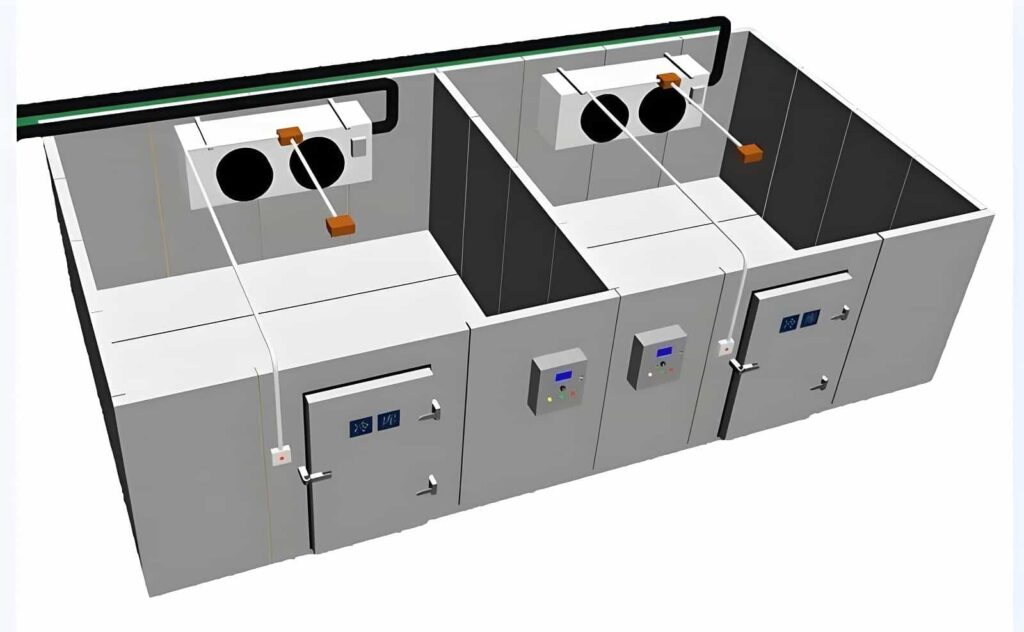
Защита от коррозии: Внешняя стена покрыта ПВХ (Поливинилхлорид) коррозионный устойчивый слой (толщина: 2мм), и внутренняя стена никелированная (толщина: 50мкм), Улучшение коррозионной устойчивости тумана и продление продолжительности жизни на 20 годы.
Б) Принцип макета
Многослойный маршрутизация труб: Основная труба подачи жидкости (Диаметр 50-80 мм) расположен в верхней части холодная комната, В то время как обратная газовая труба (Диаметр 80-120 мм) расположен внизу. Расстояние между вертикальными ветвями составляет ≤2м, уменьшение падения давления (Δp < 5%).
С) Сейсмический дизайн
Гофрированные компенсаторы трубы: Установите гофрированные трубы из нержавеющей стали (Экспансионная емкость ± 15 мм) каждый 6 метры для поглощения перемещения труб, вызванных качанием корабля.
Эластичные вешалки: Резиновые демпфирующие вешалки (коэффициент демпфирования 0.7) Допустить боковое движение труб до ± 10 см..
Д) Изоляционная лечение
Изоляционный материал: Закрытая эластомерная пена (теплопроводность 0,033 Вт/(М • К.)), с толщиной, спроектированной на основе градиента температуры (например, 60Изоляция мм для труб -30 ° C).
Внешний защитный слой: Алюминиевая фольга составное стекловолокно (Прочность на растяжение ≥50 МПа) Чтобы предотвратить механическое повреждение и удивление.
2. Конденсат и дренажные трубы
Склона дизайн: Наклон дренажной трубы составляет ≥3%, чтобы гарантировать, что конденсат естественным образом течет в камеру сбора нижней части корабля (емкость: 500-1000л), предотвращение накопления воды и роста бактерий.
А) Антистрамочные измерения
Нагревательная лента: Оберните саморегулируемую нагревательную ленту (15С мощностью) вокруг внешней части дренажной трубы для поддержания температуры трубопровода >5°С, Предотвращение блокировки, вызванных замораживанием в полярных средах.
Требования материала: Трубы UPVC (коррозионные и температурные до -40 ° C) с клеевыми соединениями на основе растворителя для предотвращения утечек.
II. Электропроводная система проектирования системы
1. Плата питания
А) Выбор кабеля
Главная линия электроснабжения: Без галогенов, низкому, Пламя-сдавшие кабели (МЭК 60092 стандартный), с зоной поперечного сечения, выбранной в 1.25 Время тока нагрузки (например, Для нагрузки на 100А, Используйте кабель 25 мм²).
Низкотемпературные кабели среды: Силиконовые резиновые кабели (диапазон температур: -60° C до 180 ° C.), используется для подключения внутренних Оборудование для холодной комнаты.
Б) Путь маршрутизации
Кабельные лотки: Установите оцинкованные стальные кабельные лотки (ширина 200 мм, высота 100 мм) на вершине холодная комната, с кабелями питания (верхний слой) и управлять кабелями (нижний слой) уложены в отдельных слоях, с расстоянием расстояния ≥300 мм, чтобы избежать электромагнитных помех.
Защита от проникновения палубы: Кабели, проходящие через палубы, защищены водонепроницаемыми герметичными железами (Рейтинг IP68) Чтобы предотвратить проникновение морской воды.
С) Избыточность дизайн
Двойные мощные цепи: Основное оборудование (например, компрессоры, Системы управления температурой) оснащен двумя независимыми схемами, со временем переключения <0.1 секунды.
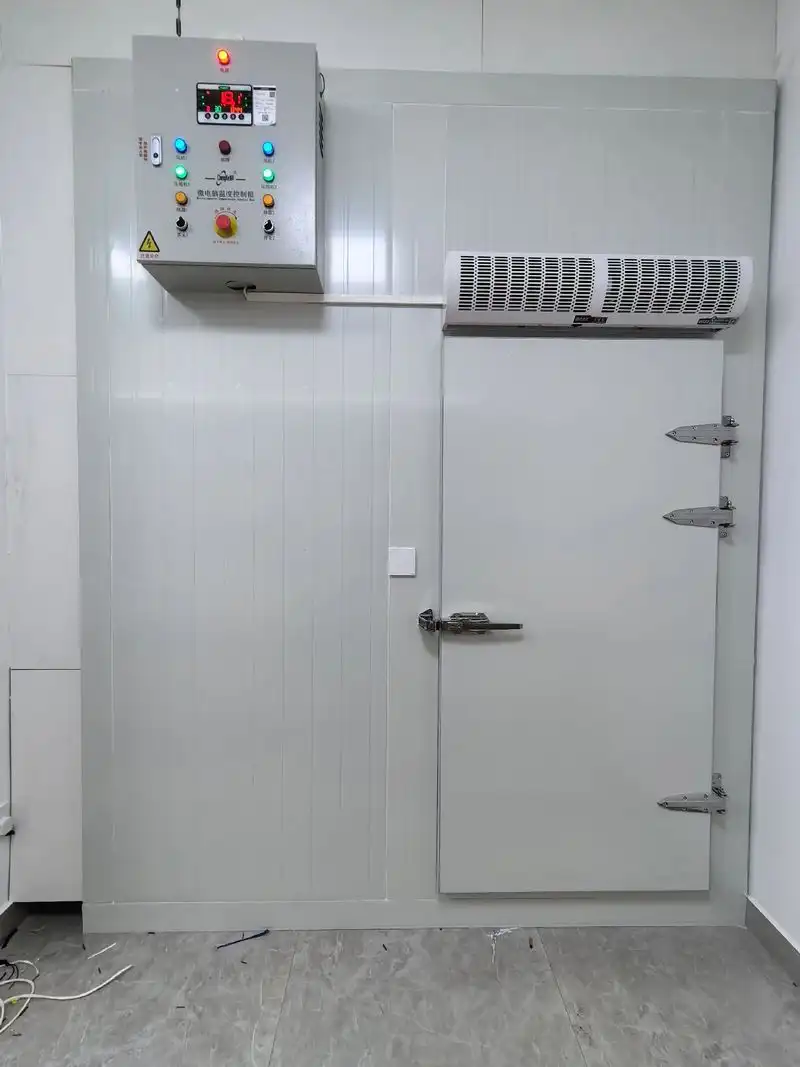
2. Контроль и сигнальная проводка
А) Противоположные меры
Экранированные кабели витой пары: Кабели сигнала датчика используют STP (Экранированная витая пара) кабели (экранирующий покрытие ≥90%), с сопротивлением заземления ≤1 Ом, подавить электромагнитный шум.
Волоконно -оптическая связь: Используйте многомодовые волоконно-оптические кабели (затухание ≤3 дБ/км) Для дальнейшей передачи (например, между палубами), Избегайте падений напряжения и помех.
Б) Уплотние влаги
Junction Boxes: Соединительные коробки внутри холодная комната сделаны из нержавеющей стали (316л), наполнен эпоксидной смолой герметиком (водонепроницаемый рейтинг IP69K).
Iii. Специальная экологическая технология реагирования
1. Коррозионная устойчивость
Защита трубопровода и кабеля: Внешняя поверхность покрыта цинко-алюминиевым покрытием (толщина 80 мкм) и полиуретановый верх (толщина 50 мкм), с тестированием солевого тумана на выносливость ≥2000 часов.
Кабельные суставы запечатаны силиконовыми резиновыми крышками (Оценка сопротивления солевого тумана ASTM B117).
2. Сейсмическое и вибрационное сопротивление
Закрепление трубопровода: Установить антисейсмические опоры 1.5 метров (нагрузка ≥500 кг), С поддержкой, приваренной к структуре корабля (Прочность сварки ≥90% базового материала).
Кабельное анти-лосение: Установить нейлоновые галстуки (Прочность на растяжение ≥50 кг) в кабельных лотках (Расстояние ≤0,5 м) чтобы предотвратить смещение кабелей из -за движения корабля.
3. Компенсация термического расширения
Компенсаторы труб: Установите расширение омега-типа (Компенсационная емкость ± 10 мм) Каждые 20 м вдоль прямых срезов труб для поглощения теплового напряжения, вызванного изменением температуры.
Пособие на расширение кабеля: Резервировать а “С” Изгиб формы (длина ≥1м) в кабеле заканчивается, позволяя изменять длину ± 5%.
IV. Обнаружение и обслуживание
1. Утечка монитора
А) Датчики утечки хладагента
Аммиак охлаждающая система: Установите электрохимические датчики (Предел обнаружения ≤5 частей), с одним датчиком на 50 м².
Co₂ холодильная система: Инфракрасные датчики поглощения (Предел обнаружения ≤1000 млрд) Предоставьте передачу данных в режиме реального времени в центр управления.
2. Изоляционное тестирование
Регулярные проверки сопротивления изоляции проводятся с использованием мегометра (2,500В DC), с минимальным сопротивлением ≥100 мОм. Если старение обнаружено, немедленно замените кабель.
3. Автоматическая проверка
Используйте инспекционный робот на основе железной дороги (например, SMP Robotics S5) С теплово -воображением и детекторами газа выполняет полное сканирование трубопровода один раз в месяц, Создание трехмерной карты дефектов.
Меры безопасности и чрезвычайных ситуаций
Управление безопасностью круизного лайнера холодная комната должен обеспечить “нулевые несчастные случаи” в соответствии с проблемами ограниченных пространств, низкотемпературная среда, и уникальные риски морской среды (такие как качание и коррозию соляного тумана).
Аварийные меры должны охватывать несколько сценариев, в том числе сбои оборудования, Безопасность персонала, огонь, и утечки.
Ниже приведены подробные сбои ключевых технических требований и эксплуатационных стандартов.
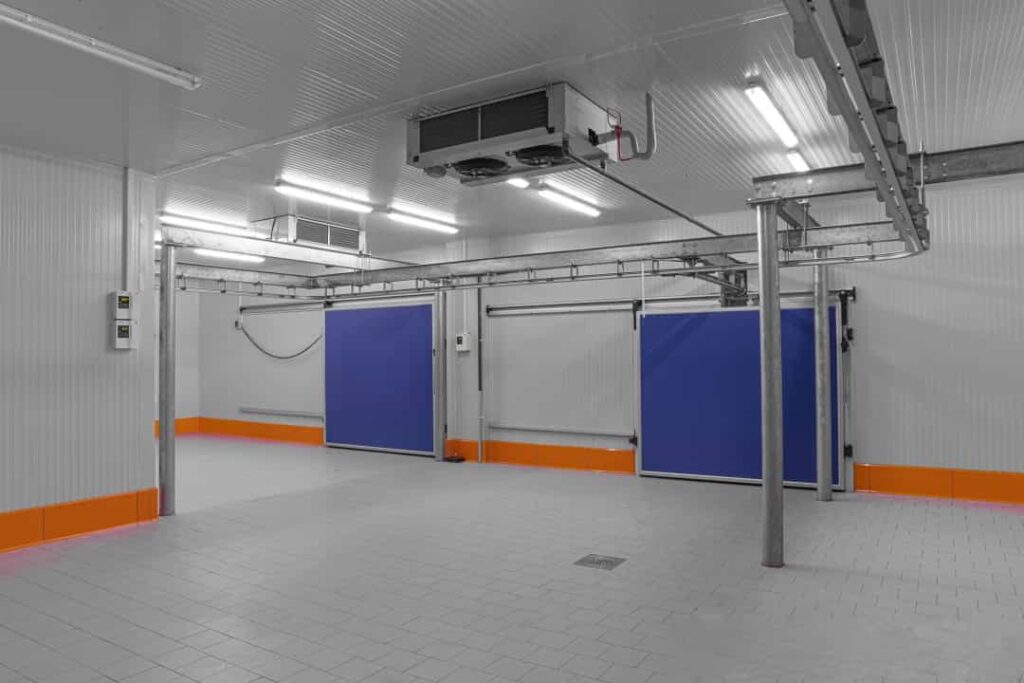
я. Меры по предотвращению пожаров и взрыва
1. Стандарты дизайна пожарной защиты
Материальная воспламеняемость: Изоляция стены холодной комнаты использует пламен-ретаративный полиуретан (кислородный индекс ≥28%), с внешним защитным слоем, изготовленным из оцинкованных стальных пластин (температура плавления 419 ° C.), Встреча Стандартов противопожарной защиты IMO A-60 (температура на задней стороне ≤180 ° C в пределах 60 минуты).
Кабели не содержат галогени (МЭК 60332-3-22 стандартный), с плотностью дыма ≤50% и высвобождением токсичных газов (например, Hcl) ≤5%.
А) Активная пожарная система
Co₂ Система подавления огня: Встроенные сопла в холодная комната (Плотность покрытия ≥1 кг/м³), Выпуск co₂ внутри 30 секунды, уменьшить концентрацию кислорода до ниже 15%.
Система подавления огня водяного тумана: Для электрических пожаров, Используйте тонкий водный туман высокого давления (Размер частиц ≤200 мкм), С скоростью распыления 2 л/мин • м², чтобы избежать повреждения оборудования, вызванного традиционными спринклерами..
2. Защита от взрыва
Аммиак охлаждаемая система взрыва защита от взрыва: Установить датчики утечки газа аммиака (Предел обнаружения ≤10ppm) в холодной комнате, Связано с фанатами, защищенными от взрыва (Поток воздуха ≥2000 м³/ч).
Электрическое оборудование оценено ex d iib t4 (температура поверхности ≤135 ° C.), Предотвращение рисков зажигания от электрических искры.
Регулируемый хладагент: Для R290 (пропан) хладагенты, В холодной комнате используется система мониторинга концентрации, С нижним пределом взрыва (Лез) установить в 20% Для целей тревоги (R290 LEL = 2.1%).
II. Аварийный реагирование на утечку хладагента
1. Обнаружение утечки и локализация
Сенсорная сеть: Установить инфракрасные датчики поглощения Co₂ (Предел обнаружения ≤500 млрд) или электрохимические датчики NH₃ (Предел обнаружения ≤5 частей) Каждые 50 м².
Обновить данные в режиме реального времени в центральной контрольной комнате, и 3D тепловые карты отображают источник утечки.
Аудирующие и визуальные уровни тревоги:
| Концентрация утечки | Меры ответа |
|---|---|
| Уровень 1 (≤Lel 20%) | Начните локальную вентиляцию, Персонал носит респираторы для проверки. |
| Уровень 2 (Лез 20%-50%) | Закрыть зону утечки, Начать эвакуацию по всему кораблю. |
| Уровень 3 (≥LEL 50%) | Выпустить полную систему подавления пожаров, Отрежьте основной источник питания. |
2. Эвакуация и спасение персонала
Аварийные маршруты побега: Холодная комната имеет двунаправленные побеги (Ширина ≥0,8 м), с системой управления доступом, которая автоматически разблокируется при отключении питания.
Флуоресцентные направляющие полосы (Яркость ≥100CD/м²) уложены на полу, чтобы вести персонал во время эвакуации.
Оборудование для защиты дыхания: Хранить респираторы с положительным давлением (Время использования ≥30 минут) В шкафах, защищенных от взрыва в пределах ≤5 м двери.
Iii. Отключения отключений электроэнергии и отклик в отказа оборудования
1. Многоуровневая резервная копия мощности
Энергетическая избыточность дизайн:
| Тип источника питания | Время переключения | Мощность | Покрытие |
|---|---|---|---|
| Главный генератор | Нет времени переключения | 100% нагрузка | Весь корабль |
| Корабельный литий -батарея | ≤10 секунд | Полная нагрузка для 4 часы | Основная холодная комната |
| Аварийный дизельный генератор | ≤60 секунд | Основной холодный ром (Медицинское хранение) для 12 часы | Критические температурные зоны |
2. Быстрое ремонт оборудования
Модульная замена дизайна: Ключевые компоненты, такие как компрессоры и испарители, используют интерфейсы быстро-разъединения (например, ОТ 2848 фланцы), с временем замены ≤2 часа.
Магазин запасных хладагентов (например, Co₂ резервуары с ≥200 кг) на борту, чтобы поддержать быстрое перезарядку.
Удаленная техническая поддержка: Используйте спутниковую связь, чтобы связаться с экспертами на суше для анализа спектра вибрации оборудования и эксплуатации оборудования и эксплуатационных данных, руководящие члены экипажа при устранении неполадок.
IV. Стандарты безопасности персонала
1. Защитные меры холодной работы
Личное защитное оборудование (СИЗ): Электрические костюмы с холодной погодой с подогревом (поддержание температуры поверхности 30 ° C), Оценка по температуре до -50 ° C.
Сапоги безопасности против скольжения (Коэффициент трения ≥0,5), со стальными пальцами ног и подошвы против.
Рабочие ограничения: Непрерывное рабочее время на человека ≤20 минут; Общее время в холодная комната за смену ≤60 минут.
2. Безопасные рабочие процедуры
Правило операции с двумя людьми: Два человека должны войти в холодную комнату вместе, носить портативные детекторы кислорода (Диапазон обнаружения: 0-25% O₂.).
Контроль доступа: Двери холодной комнаты Должен иметь внутреннее устройство аварийного разблокировки (механическая ручка), который все еще может быть открыт вручную, даже если власть теряется.
В. Экстренные тренировки и обучение
1. Система симулированной буровой системы
Сценарий охват: Огонь (моделирование выпуска дыма и пожаротушения), Утечка хладагента (Обучение виртуальной реальности), персонал в ловушке (Низкотемпературное спасение среды).
Частота тренировки: Полные тренировки экипажа каждый квартал (4 раз в год), со специальной подготовкой для ключевых должностей (например, Менеджеры холодной комнаты) ежемесячно.

2. Сертификация квалификации экипажа
Обязательное обучение содержание: Международные руководящие принципы IMO для безопасной работы Холодная комната на кораблях (MSC.1 / Circ.1582) Теоретический экзамен.
Практическая оценка: Носить респиратор с положительным давлением (≤60 секунд), Активация системы подавления пожаров CO₂ (≤30 секунд).
Заключение
Круизный лайнер холодная комната это микрокосм современной морской технологии, с его проектированием и эксплуатацией, воплощающимися в Pinnacle достижения в инженерии, материаловая наука, и умные технологии. В крайней среде океана, холодная комната не только служит “Lifeline” обеспечение безопасности пищи для тысяч людей, но также представляет собой основу конкурентоспособности бренда и устойчивого развития круизного лайнера и устойчивого развития.
От коррозионных материалов до технологии вакуумной изоляции, от динамических систем контроля температуры до цепочек поставок, управляемых AI, круизный лайнер холодная комната решил тройные проблемы пространственных ограничений, энергия узких мест, и экологические ограничения с помощью точного дизайна. Его ядро значение заключается не только при скрытых температурах до -30 ° C или до 50 ° C, но также при преобразовании неконтролируемых морских переменных в расчет, предсказуемый, и оптимизируемые инженерные параметры.
В будущем, как зеленые хладагенты (такие как водород и жидкий воздух), автономные операции и обслуживание (Инспекции робота, цифровые близнецы), и нулевая углеродная энергия (СПГ холодной энергии восстановление, Морские топливные элементы) стать более распространенными, круизный лайнер холодная комната будет развиваться из “функциональная единица” в “Интеллектуальный экологический узел.” В эпоху углеродной навигации, Он будет служить не только центром сохранения пищевых продуктов, но и для тестирования для технологических инноваций и барометр для преобразования отрасли.
Любые комментарии?
Добро пожаловать оставьте сообщение или сделайте репост.



